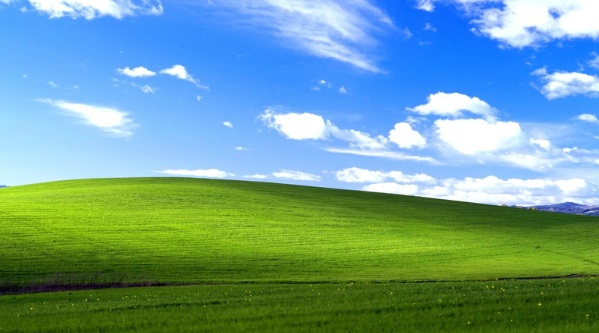The first camera and its significant contributions.
The development of photography has been a fantastic journey, and the first camera was crucial in determining how this revolutionary medium developed. We now live in a time where taking pictures is simple thanks to smartphones and digital cameras. But it is also important to remember that, the history of this brilliant innovation fundamentally changed how we perceive the world and keep memories. We shall go into the first camera’s intriguing history and important contributions to photography in this post.
The invention of the first camera
Several pioneers credited with creating the first camera made significant contributions to the advancement of photography. The camera as we know it now started to emerge in the early 19th century. Louis Daguerre was a forerunner in the invention of the daguerreotype process, a game-changing technique that transformed the taking of irreversible, permanent photographs. He created the first practical and effective method for taking photos. Around the same time, William Henry Fox Talbot developed the calotype, another early photographic process. These inventions marked the birth of photography and laid the foundation for the evolution of cameras over the years.
How did the first camera work?
The first camera in history projected an inverted and reversed image of the landscape outside onto a surface within a darkened chamber by allowing light to pass through a small hole or aperture. The straight-line movement of the light rays caused this incident to produce a picture.
First consumer camera
Most people agree that Eastman Kodak released the first consumer camera, the Eastman Kodak #1 camera, in 1888. The #1 camera, created by George Eastman himself, was a ground-breaking innovation that made photography available to the common public thanks to its straightforward and practical design. It did not require complicated film handling or processing. Because it used a pre-loaded film roll with 100 exposures. The Kodak #1 camera, with its catchphrase “You press the button, we do the rest,” allowed people to record their own special moments and was instrumental in making photography a well-liked pastime.
First Digital Camera
In 1975, engineer Steven Sasson’s invention of the first digital camera at Eastman Kodak marked a revolutionary turning point in photography. This groundbreaking device harnessed the power of a CCD (Charge-Coupled Device) sensor to digitally capture and store images, rendering traditional film obsolete. Despite its humble resolution of 0.01 megapixels, this invention ignited the digital revolution, completely transforming the photography industry. The first digital camera served as the starting point for subsequent technological developments, which ultimately produced the sophisticated and small digital cameras we use today.
Current trend
The current trend of cameras encompasses various advancements that have shaped the photography landscape. The popularity of smartphone photography has led to the widespread use of high-end camera systems. These systems provide excellent image quality, cutting-edge computational photography features, and various lenses for flexible shooting possibilities. Due to their professional-grade performance in small bodies, use of electronic viewfinders, and availability of many different interchangeable lenses, mirrorless cameras have become increasingly popular. The popularity of mirrorless systems has also sparked advancements in autofocus, video capability, and low-light performance. The integration of artificial intelligence and machine learning algorithms has made it possible to further empower photographers of all skill levels with features like intelligent scene identification, image stabilization, and increased image processing.
Impacts on our life
The development of this technology has significantly changed how we experience, share, and capture our experiences. It has transformed communication by enabling us to quickly connect visually and share our lives with people all over the world. Cameras have empowered individuals, enabling anyone to become a storyteller, capturing their unique perspectives and sharing them with the world. They have become potent instruments for journalism, education, documenting, memory preservation, and shaping historical records. The technology of the camera has influenced the entertainment, art, and advertising industries by opening up new creative opportunities. This technology has had a profound effect on human life. It enhances our connections, preserves our stories, and extends the limits of visual expression.

Interesting facts about camera and photography
| # In 1861, the first color photograph was taken. # The First Flashes Were Made of Aluminum and Potassium Chloride. # The first camera capable of capturing an image was the daguerreotype. # A digital camera was created for the first time in 1975. # The first photograph that was ever captured was made by Joseph Nicéphore Niépce. # William Henry Fox Talbot invented the first negative in 1839. # The first selfie was taken in 1839. # The first photograph of a person was accidental # Greek origins of the word photography # The first photo booth was made by Anatol Josepho in New York City in 1925. # In photographs, our faces’ left side appears more attractive. # In 1925, Charles Martin captured the first underwater image. # The image of the Windows XP background has received the most views in history. |
FAQs
In 1975, researchers developed the first digital camera.
In 1839, someone took the first selfie.
The first camera in history projected an inverted and reversed image of the landscape outside onto a surface within a darkened chamber by allowing light to pass through a small hole or aperture. The straight-line movement of the light rays caused this incident to produce a picture.
Most people agree that Eastman Kodak released the first consumer camera, the Eastman Kodak #1 camera, in 1888.
***To get more updates visit: https://toptecviews.com/technology/the-first-camera-and-its-significant-contributions/


Comments
Post a Comment